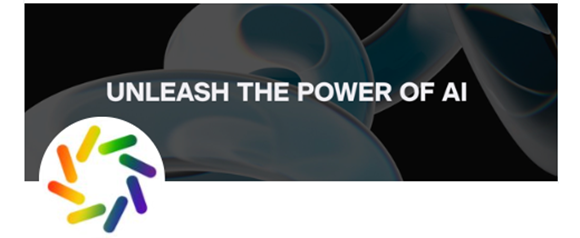Reversing the A to Z of fragmented AI, Domino adds Zero-to-AI
Domino Data Lab has updated its enterprise AI platform and data science offerings to now introduce a more unified system for productivity, governance and delivery.
The promise from Domino is: a route to turning “fragmented initiatives” into an AI factory for trusted software services.
Zero-to-AI is a new service offering designed to catalyse AI cultural change within enterprises.
“Getting models into production is no longer the hard part, it’s realising business value at scale,” said Heidi Lanford, co-founder at NavAlytix and former CDO at Fitch Group. “That requires a system that connects experimentation to governed, repeatable delivery. Domino provides that foundation.”
This shift in focus (from deployment to scaled, governed impact) requires new infrastructure (so says Domino) and discipline across the AI lifecycle.
“We’re redefining the AI lifecycle to make it faster, safer, and more efficient,” said Nick Elprin, co-founder and CEO of Domino Data Lab. “[This] release gives enterprises an AI factory for turning experimentation into impact – with built-in governance and automation to deliver AI products at scale.”
Domino’s latest software aims to address the challenge that data science teams face when they lose time to restrictive tools and infrastructure overhead. The new features accelerate development by connecting local tools to Domino workspaces, combining the flexibility of familiar environments with scalable compute, reproducibility and enterprise-grade governance.
Built-in governance
Typical AI governance often slows AI delivery and creates manual overhead. Domino’s new platform progression claims to changes that – enhancing the governance built into everyday workflows to accelerate the governance lifecycle, reduce risk, and scale with confidence.
With this release, organisations can:
- Cut audit prep time by 70% with automated checks that track policy compliance in real time – using the right metrics, on the right artifacts, without manual effort.
- Accelerate model validation and review with structured findings and conditional approvals that streamline collaboration, flag risks and ensure full traceability in Domino.
- Empower risk management teams to create and manage governance policies through an intuitive, visual builder interface that bridges risk and data science stakeholders to build governance that goes beyond good intentions.
- Automate policy enforcement by blocking premature model operation with new “gated deployment” capability.
A new cost centre dashboard has also been included to track compute costs by user, project, or workload. Along with Domino’s budget alerts, this new capability helps teams prevent waste and justify infrastructure spend.
NetApp ONTAP
Domino Volumes for NetApp ONTAP, now generally available, gives data scientists on-demand access to enterprise data – while IT retains control with trusted ONTAP governance and hybrid infrastructure management.
We can also note that Domino is now validated as part of the enterprise AI factory design from capitalisation-centric GPU firm Nvidia.
Other new capabilities include Domino Apps and enhanced compliance workflows, which debuted at Domino’s life sciences–focused RevX event this year. In one life sciences use case, teams can use these latest platform capabilities to accelerate clinical trial recruitment by predicting patient eligibility from large, multi-source datasets.
Zero to AI
As noted above and in our title, Domino also announced Zero to AI, a new service offering that helps enterprises industrialise AI by fast-tracking high-impact use cases from pilot to production. It combines Domino’s architectural expertise, implementation support and training to deliver customers scalable, audit-ready AI solutions.
With Zero-to-AI, customers get the application of Domino’s approach to deliver production-ready AI, creating what the company calls “reusable foundations” for future projects. This also features template-first development inspired by software engineering best practices, with modular pipelines, reusable code, and UIs that accelerate delivery. Audit-ready architecture with versioned, testable components that ensure every deployment is scalable and compliant.




